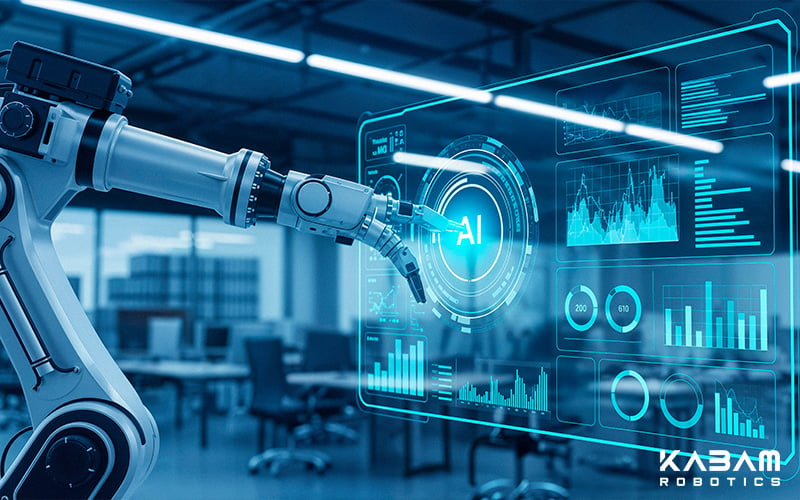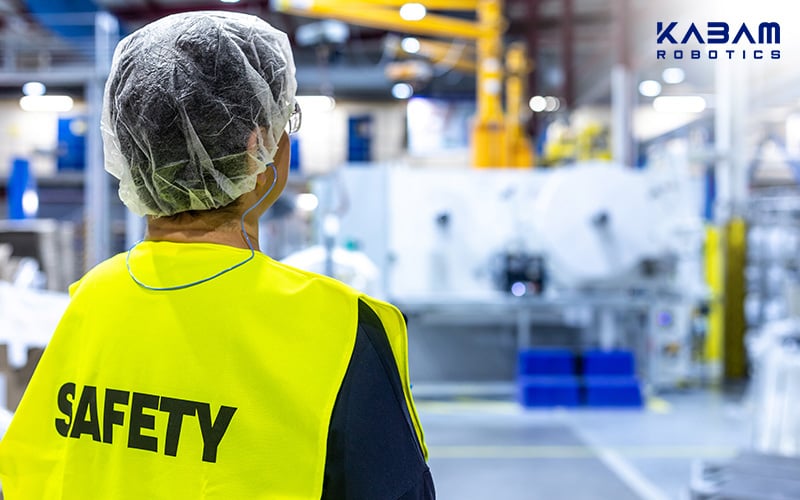Part 1: Introduction
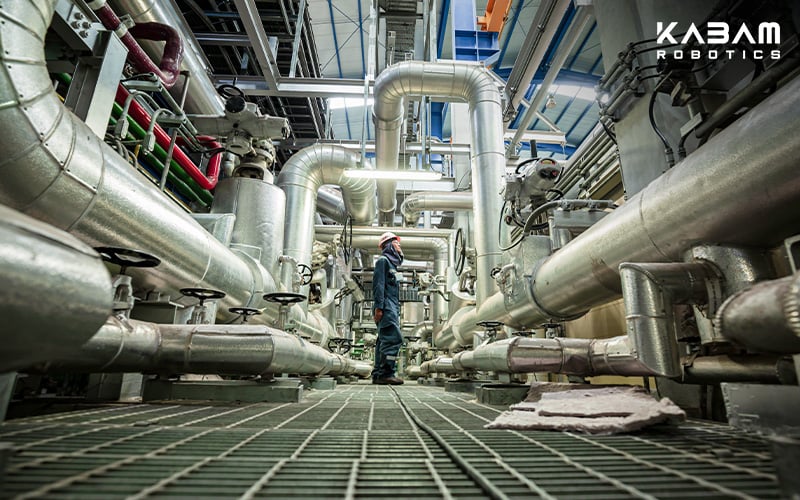
Automation is part and parcel of the modern world, and at the heart of this is robotics technology, a key innovation that is transforming many industries across the globe. Amidst the numerous uses of robots in daily life, one beneficiary of robotics technology is facility management, as task automation has helped improve security and operational efficiency. Traditional facility management methods often rely on manual labour, which can be costly, time-consuming, and prone to human error. With advancements in autonomous robot technology, businesses in Singapore are embracing smarter solutions to streamline operations and improve overall productivity.
Robotics in facility management is not just about automation — it is about creating a seamless, data-driven ecosystem where robots work alongside human teams to ensure facilities run smoothly. From AI-powered security patrols to automated maintenance checks, robots can perform tasks with precision, consistency, and real-time reporting capabilities. Integrating IoT in facility management further enhances these capabilities, allowing businesses to collect and analyse data to optimise energy usage, predict maintenance needs, and ensure compliance with safety regulations.
KABAM Robotics is at the forefront of this evolution, providing innovative robotics solutions tailored for Singapore’s dynamic commercial and industrial sectors. By leveraging intelligent security robots like Halo, automation platforms like Smart+, and collaborative surveillance systems like Co-Lab, businesses can enhance security, reduce operational costs, and improve workforce efficiency.
This article explores how robotics technology is revolutionising facility management, its key applications, and the game-changing solutions offered by KABAM Robotics.
Part 2: Understanding Robotics in Facility Management
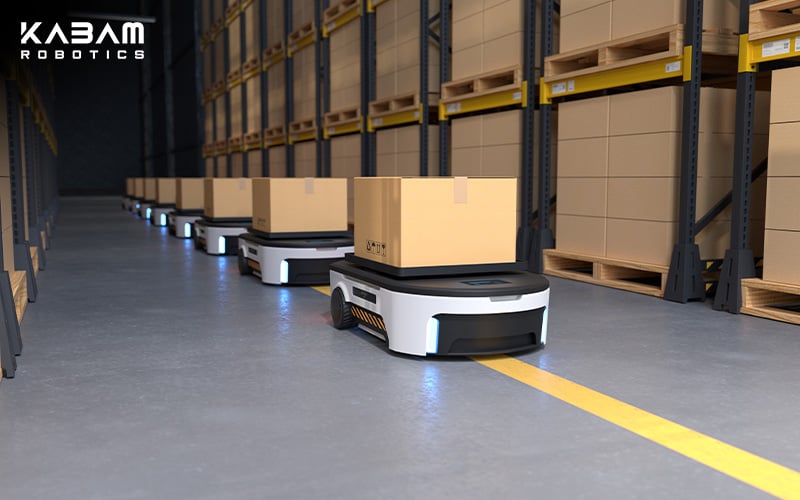
2.1. The Role of Robotics in Modern Facility Management
As businesses in Singapore seek greater efficiency, robotics technology is redefining facility monitoring technology by automating essential tasks, reducing reliance on manual labour, and minimising human errors. Traditional facility management often struggles with labour shortages, rising operational costs, and the challenge of maintaining consistent performance. Robots bridge this gap by providing round-the-clock monitoring, real-time data collection, and seamless integration with existing security and infrastructure systems.
Modern robotics in facility management is designed to perform a wide range of tasks, from autonomous security patrols to environmental monitoring. AI-driven security robots can conduct 24/7 surveillance, detect potential threats, and send alerts to facility managers, improving overall safety. Maintenance robots can inspect facilities for issues such as equipment malfunctions, leaks, or structural damages, ensuring timely intervention and reducing costly downtime.
By incorporating IoT in facility management, businesses can enhance real-time data analysis, enabling predictive maintenance and optimised energy consumption. The ability of robots to integrate with other smart systems allows for improved decision-making and seamless automation of facility operations. With the adoption of robotic technology in Singapore, businesses can significantly enhance efficiency, security, and sustainability in their facility management strategies.
2.2. Core Benefits of Robotics in Facility Management
The integration of robotics technology in facility management provides significant advantages, transforming how businesses handle security, maintenance, and daily operations. By automating time-consuming and labour-intensive tasks, robots optimize efficiency while reducing costs, making facility management more effective and sustainable.
One of the primary benefits of robotics in facility management is improved inspection efficiency. AI-powered robots can autonomously navigate large premises to conduct real-time facility inspections whilst simultaneously performing real-time surveillance. These robots identify maintenance issues such as leaks, structural damage, or blocked pathways with precision. Equipped with high-resolution cameras, thermal sensors, and AI-driven analytics, they detect anomalies early and generate automated alerts. This dual capability of inspection and surveillance allows facility managers to respond quickly, prevent costly downtime, and maintain a safer, more operationally efficient environment.
Operational efficiency is another key advantage. Robots streamline workflows by automating repetitive tasks like inspections, patrolling, and maintenance checks. They ensure that facilities operate smoothly, minimising disruptions and allowing human staff to focus on higher-value responsibilities.
Additionally, cost reduction is a major driver for adopting robotic solutions. With rising manpower costs in facility management, robots offer a sustainable alternative by performing routine inspections, reducing the need for large onsite teams. These autonomous robotic solutions can identify issues early, prevent costly breakdowns, and lower maintenance expenses. By integrating IoT in facility management, robots also deliver real-time analytics that improve energy efficiency and enable smarter resource allocation. This not only reduces operational costs but also ensures consistent performance, helping businesses maintain high standards without the burden of escalating labour expenses.
By embracing robotics technology, facility managers can enhance inspection accuracy, improve real-time surveillance, and streamline maintenance operations. This leads to greater efficiency, reduced operational costs, and more sustainable facility management practices.
Part 3: Key Applications of Robotics Technology in Facility Management
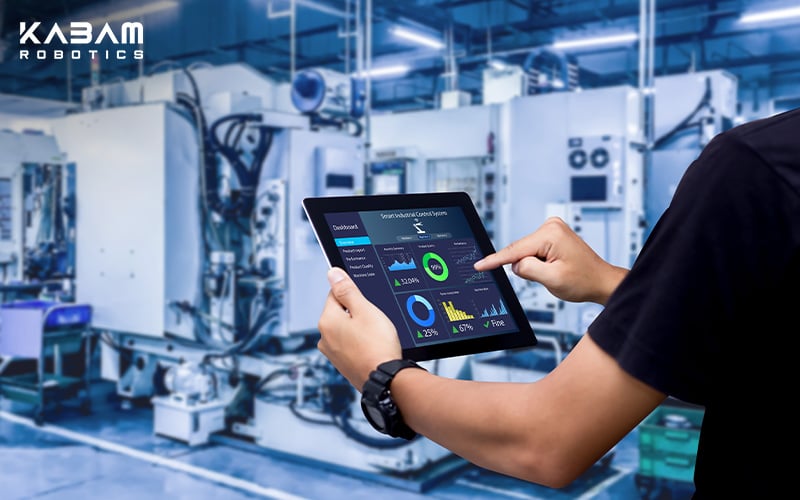
3.1. Robotics in Security and Surveillance
The use of robotics technology in security and surveillance has helped optimize facility monitoring strategies, providing advanced solutions that improve safety, efficiency, and response times. Security robots offer 24/7 surveillance, autonomously patrolling facilities and detecting anomalies in real time. Equipped with AI-driven analytics, these robots can identify unauthorized access, monitor restricted areas, and alert security teams about potential threats before they escalate.
One of the key advantages of robotic security solutions is their ability to adopt IoT in facility management. By integrating with existing surveillance networks, access control systems, and alarm protocols, these robots create a connected security ecosystem that improves situational awareness. Advanced features like facial recognition, automated threat detection, and emergency response mechanisms help prevent security breaches while reducing reliance on human personnel.
As a leading robot manufacturer in Singapore, KABAM Robotics offers industry-leading security solutions such as Halo and Co-Lab, designed to provide autonomous, cutting-edge robotics technology that enhances facility security. These robots not only monitor premises but also assist security personnel in decision-making through real-time data analytics. Whether deployed in commercial buildings, retail environments, or logistics hubs, these robotic systems strengthen security infrastructure, ensuring a proactive approach to risk management.
As advanced robotic technology continues to evolve, businesses can achieve unparalleled security, efficiency, and cost-effectiveness with AI-powered surveillance solutions.
3.2. Environmental Monitoring and Maintenance
Other aspects of facility management that robotics technology has also been integrated into include environmental monitoring and maintenance. This has transformed how facilities ensure cleanliness, safety, and operational efficiency. Security robots are now equipped with advanced sensors and AI-driven analytics to detect issues such as water leaks, faulty lighting, overflowing bins, and temperature irregularities. These robots provide real-time insights, allowing facility managers to take immediate action before minor issues escalate into costly problems.
A key advantage of robotic solutions in environmental monitoring is their ability to tap into IoT to continuously collect and analyse data, ensuring that facilities maintain optimal conditions for occupants. Whether it is monitoring air quality, detecting maintenance needs, or assessing infrastructure integrity, robotics technology plays a critical role in proactive facility management.
KABAM Robotics’ autonomous robot technology goes beyond traditional security functions by incorporating environmental surveillance into their operations. Robots like Co-Lab patrol facilities, identify maintenance concerns, and alert facility managers via a robotic management system, streamlining workflows and ensuring quick responses.
By leveraging advanced robotic technology, businesses in Singapore can enhance sustainability, improve workplace conditions, and maintain compliance with health and safety standards. This integration reduces the need for manual inspections, ensuring a more efficient and data-driven approach to facility maintenance.
3.3. Energy Management and Sustainability
Robotics technology plays a crucial role in optimising energy management and supporting sustainability goals within facilities. By integrating autonomous robot technology with IoT in facility management, businesses can track and manage energy consumption more efficiently, identify inefficiencies, and implement corrective actions to reduce waste.
These robots continuously monitor energy use in real-time, helping facilities identify areas where energy is being wasted — such as excessive lighting or heating in unused spaces — and enabling adjustments for greater efficiency. Robots can also integrate with smart building systems, allowing them to control lighting, heating, and cooling systems autonomously based on environmental conditions. These capabilities are just some of the many examples of robotics technology that can help reduce operational costs and support sustainability initiatives by lowering the facility’s carbon footprint.
KABAM Robotics offers solutions like Smart+, which helps facility managers optimize energy consumption by automating system control and collecting data for analysis. These systems can identify trends and recommend adjustments, ensuring that energy-saving measures are both effective and cost-efficient.
Additionally, this advanced robotic technology can be seamlessly integrated into energy management systems, helping them achieve environmental goals whilst maintaining operational efficiency. By reducing waste and supporting energy sustainability, robotics technology not only optimizes facility operations but also contributes to the broader effort of environmental stewardship.
Part 4: How KABAM Robotics Solutions Revolutionize Facility Management with Virtual Assistants
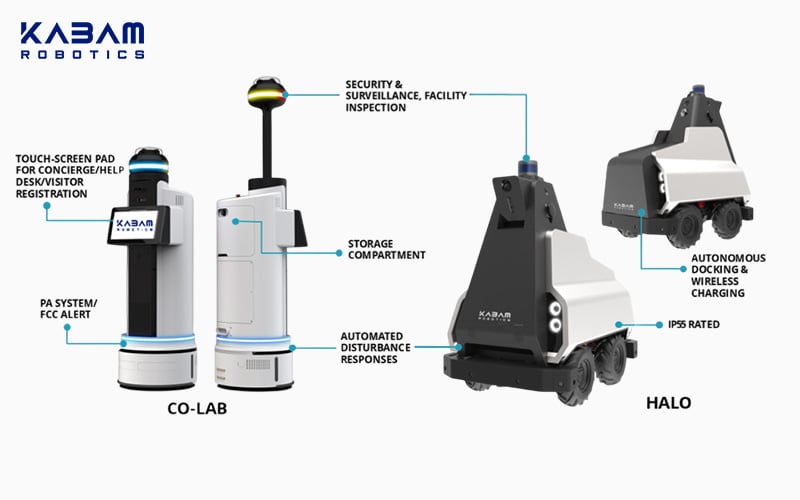
4.1. Halo: Intelligent Security Monitoring
KABAM’s Halo robot is transforming facility management with its advanced robotics technology and AI-driven capabilities. Engineered for 24/7 autonomous patrols, Halo conducts comprehensive facility checks across sectors such as hospitality, healthcare, logistics, and retail. It inspects for maintenance issues like water leaks, structural damage, blocked emergency exits, and improper storage — ensuring that facility conditions remain compliant and operationally safe.
Halo uses high-resolution cameras, sensors, and AI analytics to identify anomalies in real-time. When it detects an issue, it automatically sends alerts to facility managers, enabling prompt action and reducing the risk of costly downtime.
Seamlessly integrating with existing building systems like CCTV and IoT-enabled sensors, Halo complements existing infrastructures while streamlining inspections and reporting. In Singapore’s fast-paced urban environment, Halo supports smarter facility operations by increasing inspection frequency, reducing reliance on manual checks, and improving maintenance response times.
With KABAM’s Halo robot, businesses can elevate their facility management practices, achieving safer, more efficient, and proactive building oversight. These capabilities reflect our commitment to being a leading robotics solutions provider.
4.2. Smart+: Automated Facility Operations
KABAM’s Smart+ platform exemplifies the future of robot technology by unifying diverse robotic systems, building infrastructures, and management tools into a single intelligent ecosystem. As reliance on automation grows, Smart+ addresses the critical need for integration, allowing facility managers to monitor and control multiple robots from different brands on one device-agnostic platform. This flexibility eliminates the limitations of proprietary systems and supports scalable, future-ready operations.
A standout feature of Smart+ is its ability to provide real-time alerts during facility inspection checks. For example, when a deployed robot identifies a faulty light, a blocked emergency exit, or a potential hazard, Smart+ instantly notifies the command centre. This immediate feedback enables swift intervention, helping facility teams resolve issues before they escalate.
With a centralized interface for tracking inspections, allocating resources, and optimising workflows, Smart+ streamlines operations while maintaining high standards in safety, energy efficiency, and maintenance. In terms of robotics solutions, Smart+ offers businesses a forward-looking system that enhances facility performance through automation and AI-driven insight.
4.3. Co-Lab: Enhancing Human-Robot Collaboration
KABAM’s Co-Lab robot is a prime example of how robots are helpful to humans, especially in facility management. Designed for 24/7 surveillance, data collection, and video analytics, Co-Lab excels in monitoring and maintaining large premises such as office buildings, warehouses, and commercial spaces. Its advanced sensors and real-time data transmission capabilities make it an ideal solution for conducting regular facility inspection checks.
One of Co-Lab’s standout features is its 2-meter telescopic camera, which provides a 360-degree view for thorough inspections. This gives Co-Lab an enhanced field of view from a higher vantage point, something humans are unable to do. During patrols, Co-Lab can detect facility-related issues such as blocked exits, faulty lighting, or spills, automatically generating alerts for swift action by facility managers via KABAM’s Smart+ platform.
In addition to inspection tasks, Co-Lab includes interactive features such as a public announcement system and a touchscreen interface that delivers building directories and important updates to visitors and staff. This dual role as both inspector and information hub makes Co-Lab a valuable asset to facility teams.
With a user-friendly mission control interface, Co-Lab is an excellent example of how robotics technology can simplify facility monitoring, enabling quicker issue resolution and more efficient operations. It sets a new benchmark for intelligent, autonomous facility management while building a more seamless collaboration between humans and robots.
Part 5: Overcoming Challenges in Robotics Implementation

5.1. Addressing Common Barriers to Adoption
Adopting robotics in facility management can present several challenges, but with the right approach, these barriers can be overcome.
High Initial Costs: While the upfront investment in robotic systems may seem significant, the long-term savings in labour, maintenance, and operational efficiency make it a worthwhile investment. The return on investment (ROI) becomes apparent as tasks become automated and the facility’s operations improve.
Workforce Integration: Introducing robotics into the workforce can cause resistance amongst employees. However, providing comprehensive training programs helps ease the transition, ensuring that employees understand the benefits and operational aspects of the systems. With the right support, workers can focus on higher-level tasks while robots handle repetitive functions.
Technical Complexity: The technical integration of robotics systems might seem like a daunting task. However, partnering with a reliable robot manufacturer like KABAM Robotics ensures that the adoption process is smooth and the technology is tailored to meet the specific needs of the facility, offering ongoing support for any challenges that arise.
5.2. Future Trends in Robotics Technology
As robotics technology continues to evolve, several exciting trends are set to shape the future.
5G Integration: With the rollout of 5G networks, robotic systems will experience enhanced connectivity, enabling real-time data sharing and decision-making. This will facilitate more responsive and dynamic operations , improving overall efficiency.
AI-Driven Predictive Analytics: The future of robotics will see an increased reliance on AI to predict maintenance needs, potential system failures, and other operational inefficiencies. Predictive analytics will allow facilities to proactively address issues before they become problems, reducing downtime and enhancing productivity.
Autonomous Decision-Making: Advanced robotic technology will continue to evolve with deeper machine learning capabilities, enabling robots to make autonomous decisions in complex environments. This shift will enhance robot performance, allowing for more sophisticated tasks and increasing their role in facility management.
These trends demonstrate how robotics solutions will continuously improve facility management, driving smarter, more efficient operations.
FAQs
1. How does robotics improve facility monitoring?
Robotics technology automates surveillance and enhances security in facility management. With AI-driven insights, it optimises efficiency, reduces human error, and ensures safer operations. These robots perform real-time monitoring and send instant alerts to command centres upon detecting anomalies such as leaks, obstructions, or safety violations — enabling swift response and corrective action. This proactive approach significantly improves overall facility performance.
2. What industries benefit from KABAM’s solutions?
Industries like healthcare, retail, logistics, and hospitality benefit from KABAM’s Halo, Smart+, and Co-Lab solutions. These technologies enhance security, automate processes, and improve operational efficiency, enabling businesses to optimize their facilities and streamline operations for greater effectiveness and productivity.
3. Are robotic solutions cost-effective for small businesses?
Yes, robotic solutions are scalable for businesses of all sizes. They provide cost-effective, long-term benefits, including reduced labor costs and enhanced resource management, making them an affordable option for small businesses looking to improve efficiency and streamline operations.
As robotics technology continues to develop, so too, will industries around the world. This article illustrates how facility monitoring has already benefitted, and will continue to benefit from automation, making operations more efficient, secure, and sustainable. With advanced robotics solutions like KABAM’s Halo, Smart+, and Co-Lab, businesses in Singapore can harness the power of automation to stay ahead in an evolving industry.
Here at KABAM Robotics, we offer personalized solutions designed to meet the unique needs of different industries. Whether you are in healthcare, hospitality, retail, or logistics, KABAM’s robotics solutions improve efficiency and drive operational excellence.
For more information on our services, please contact us today.

